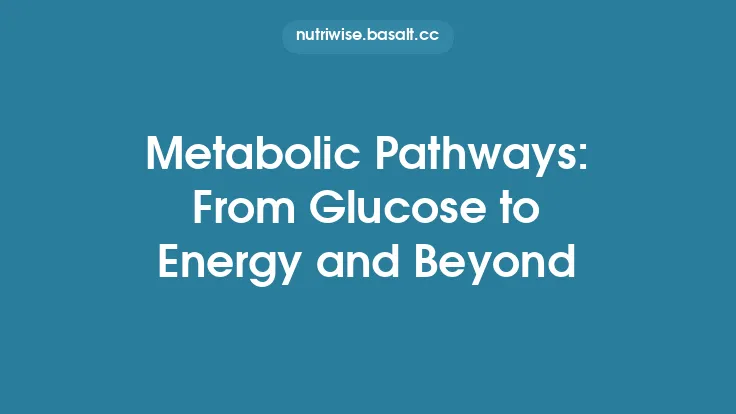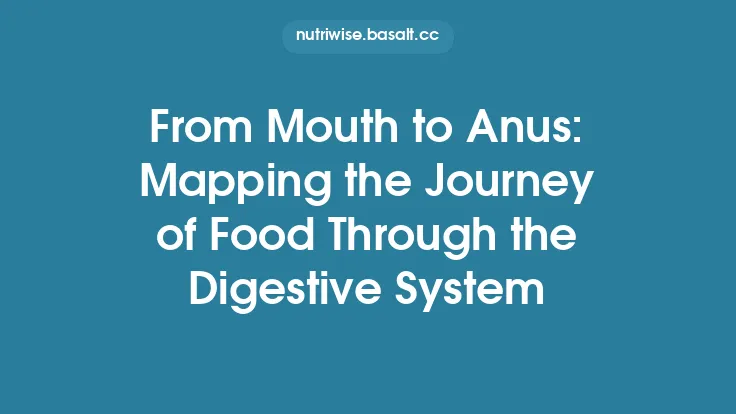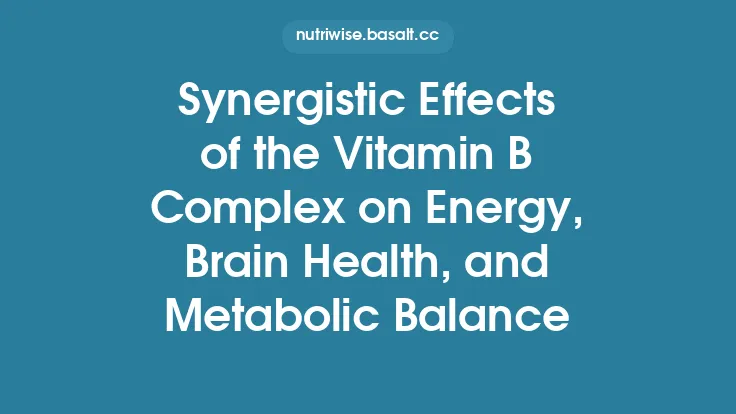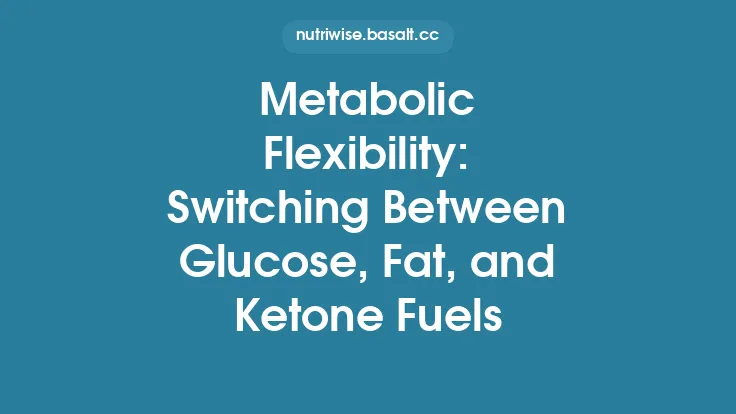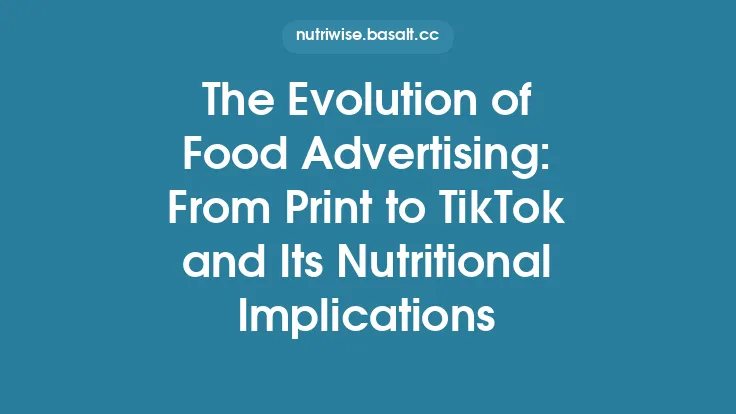Glucose is the primary carbohydrate fuel that powers virtually every cell in the human body. When we eat a starchy meal, the digestive system breaks down complex polysaccharides into the simple monosaccharide glucose, which then enters the bloodstream and is delivered to tissues. Once inside a cell, glucose embarks on a tightly orchestrated series of biochemical steps that extract its chemical energy and convert it into adenosine‑triphosphate (ATP), the universal energy‑currency of life. This journey can be divided into two major chapters: glycolysis, the cytosolic pathway that splits glucose into two three‑carbon molecules, and oxidative phosphorylation, the mitochondrial process that uses the high‑energy electrons released during glycolysis (and subsequent mitochondrial reactions) to drive the synthesis of the bulk of cellular ATP.
Overview of Glucose Metabolism
| Step | Cellular Compartment | Primary Outcome |
|---|---|---|
| Glucose uptake | Plasma membrane (via GLUT transporters) | Intracellular glucose pool |
| Glycolysis | Cytosol | 2 pyruvate, 2 net ATP, 2 NADH |
| Pyruvate handling | Mitochondrial matrix (via pyruvate carrier) | Acetyl‑CoA (entry point to downstream pathways) |
| Oxidative phosphorylation | Inner mitochondrial membrane | ~26–28 ATP per glucose (via electron transport chain and ATP synthase) |
The net ATP yield from a single glucose molecule varies slightly depending on the cell type and the efficiency of the shuttles that move reducing equivalents into the mitochondrion, but the overall picture remains consistent: glycolysis provides a quick, oxygen‑independent burst of energy, while oxidative phosphorylation supplies the high‑capacity, oxygen‑dependent phase that sustains most cellular activities.
Glycolysis: The Ten‑Step Pathway
Glycolysis proceeds through a sequence of ten enzyme‑catalyzed reactions, traditionally grouped into an energy‑investment phase (steps 1–5) and an energy‑payoff phase (steps 6–10). The pathway is linear, highly conserved across organisms, and operates without the need for oxygen.
1. Energy‑Investment Phase
| Step | Enzyme | Key Transformation |
|---|---|---|
| 1. Phosphorylation of glucose | Hexokinase (or glucokinase in liver) | Glucose → Glucose‑6‑phosphate (G6P); consumes 1 ATP |
| 2. Isomerization | Phosphoglucose isomerase | G6P → Fructose‑6‑phosphate (F6P) |
| 3. Second phosphorylation | Phosphofructokinase‑1 (PFK‑1) | F6P → Fructose‑1,6‑bisphosphate (FBP); consumes 1 ATP |
| 4. Cleavage | Aldolase | FBP → Dihydroxyacetone phosphate (DHAP) + Glyceraldehyde‑3‑phosphate (G3P) |
| 5. Interconversion | Triose phosphate isomerase | DHAP ↔ G3P (ensuring two molecules of G3P for the payoff phase) |
The two ATP molecules invested here are crucial for “priming” the glucose molecule, making the subsequent steps energetically favorable.
2. Energy‑Payoff Phase
| Step | Enzyme | Key Transformation |
|---|---|---|
| 6. Oxidation & phosphorylation | Glyceraldehyde‑3‑phosphate dehydrogenase (GAPDH) | G3P + NAD⁺ + Pi → 1,3‑Bisphosphoglycerate (1,3‑BPG) + NADH |
| 7. Substrate‑level phosphorylation | Phosphoglycerate kinase | 1,3‑BPG + ADP → 3‑Phosphoglycerate (3PG) + ATP |
| 8. Rearrangement | Phosphoglycerate mutase | 3PG → 2‑Phosphoglycerate (2PG) |
| 9. Dehydration | Enolase | 2PG → Phosphoenolpyruvate (PEP) + H₂O |
| 10. Final substrate‑level phosphorylation | Pyruvate kinase | PEP + ADP → Pyruvate + ATP |
Because each glucose yields two G3P molecules, steps 6–10 occur twice, resulting in 4 ATP (2 from step 7, 2 from step 10) and 2 NADH per glucose. Subtracting the 2 ATP spent earlier gives a net gain of 2 ATP from glycolysis alone.
3. Key Regulatory Nodes
Glycolysis is not a simple “on/off” pathway; it is finely tuned to cellular energy status:
- Hexokinase is inhibited by its product, G6P, preventing unnecessary glucose phosphorylation when downstream pathways are saturated.
- PFK‑1 is the principal control point, allosterically activated by ADP/AMP (signaling low energy) and inhibited by ATP and citrate (signaling sufficient energy and abundant biosynthetic precursors).
- Pyruvate kinase is activated by fructose‑1,6‑bisphosphate (feed‑forward) and inhibited by ATP and acetyl‑CoA, linking glycolysis to the mitochondrial workload.
These regulatory mechanisms ensure that glycolysis accelerates when the cell needs rapid ATP and slows when energy supplies are ample.
Fate of Pyruvate: From Cytosol to Mitochondria
Once glycolysis ends, the two pyruvate molecules generated must be dealt with. In most aerobic cells, pyruvate is shuttled across the inner mitochondrial membrane by the mitochondrial pyruvate carrier (MPC). Inside the matrix, pyruvate undergoes oxidative decarboxylation catalyzed by the pyruvate dehydrogenase complex (PDC), producing acetyl‑CoA, one molecule of CO₂, and a third NADH per pyruvate. Although the detailed steps of the citric acid cycle are covered elsewhere, this conversion is essential because acetyl‑CoA feeds the electron carriers that will later donate electrons to the respiratory chain.
In anaerobic or highly glycolytic conditions (e.g., intense exercise), pyruvate can be reduced to lactate by lactate dehydrogenase, regenerating NAD⁺ for continued glycolysis. This lactate can later be transported to the liver for gluconeogenesis (Cori cycle) or oxidized in mitochondria when oxygen becomes available.
Oxidative Phosphorylation: The Powerhouse Process
Oxidative phosphorylation (OXPHOS) is the final, high‑yield stage of glucose‑derived energy extraction. It consists of two tightly coupled components:
- The Electron Transport Chain (ETC) – a series of membrane‑embedded protein complexes (I–IV) that pass electrons from NADH and FADH₂ to molecular oxygen, creating a proton gradient.
- ATP Synthase (Complex V) – a rotary enzyme that uses the electrochemical proton motive force to synthesize ATP from ADP and inorganic phosphate (Pi).
1. Electron Transport Chain Overview
| Complex | Primary Electron Donor | Final Electron Acceptor | Proton Translocation |
|---|---|---|---|
| I (NADH: ubiquinone oxidoreductase) | NADH | Ubiquinone (Q) | 4 H⁺ pumped per NADH |
| II (Succinate dehydrogenase) | FADH₂ (from TCA) | Ubiquinone | 0 H⁺ pumped (direct entry) |
| III (Cytochrome bc₁ complex) | Reduced ubiquinol (QH₂) | Cytochrome c | 4 H⁺ pumped |
| IV (Cytochrome c oxidase) | Reduced cytochrome c | O₂ → H₂O | 2 H⁺ pumped |
Electrons travel from NADH (high‑energy) to oxygen (the ultimate low‑energy acceptor). The energy released at each step is used to pump protons from the matrix into the intermembrane space, establishing an electrochemical gradient (Δp). The magnitude of Δp is the driving force for ATP synthesis.
2. Proton Motive Force and ATP Synthase
The proton motive force comprises two components:
- Δψ (membrane potential) – the electrical potential generated by charge separation.
- ΔpH (pH gradient) – the chemical gradient due to differing proton concentrations.
ATP synthase harnesses this force: protons flow back into the matrix through the F₀ subunit, causing rotation of the central γ‑shaft. This mechanical rotation induces conformational changes in the F₁ catalytic domain, driving the condensation of ADP and Pi into ATP. Approximately 3–4 protons are required to synthesize one ATP molecule, depending on the exact stoichiometry of the enzyme in a given tissue.
3. Overall ATP Yield from Oxidative Phosphorylation
From each glucose molecule:
- 2 NADH from glycolysis (cytosolic) – transferred into mitochondria via shuttles (malate‑aspartate or glycerol‑3‑phosphate). The malate‑aspartate shuttle delivers the full ~2.5 ATP per NADH, while the glycerol‑3‑phosphate shuttle yields ~1.5 ATP per NADH.
- 2 NADH from pyruvate → acetyl‑CoA conversion (PDC) – each yields ~2.5 ATP.
- 2 NADH and 2 FADH₂ from the downstream citric acid cycle (not detailed here) – each NADH ~2.5 ATP, each FADH₂ ~1.5 ATP.
Summing the contributions (using the more efficient malate‑aspartate shuttle) gives an oxidative phosphorylation yield of ~26–28 ATP per glucose, which, together with the 2 ATP from glycolysis, results in a total of ~30–32 ATP per glucose under optimal conditions.
Coupling of Glycolysis and Oxidative Phosphorylation
The two pathways are not isolated; they communicate through several mechanisms:
- NADH Shuttles – Cytosolic NADH cannot cross the inner mitochondrial membrane directly. The malate‑aspartate shuttle transfers reducing equivalents by converting oxaloacetate to malate (which crosses the membrane) and then re‑oxidizing it back to oxaloacetate in the matrix, regenerating NAD⁺ in the cytosol. The glycerol‑3‑phosphate shuttle uses dihydroxyacetone phosphate (DHAP) and glycerol‑3‑phosphate as carriers, feeding electrons directly into Complex II.
- ADP/ATP Translocase – Exports newly synthesized ATP from the matrix to the cytosol while importing ADP, maintaining the balance of substrates for both glycolysis and OXPHOS.
- Feedback Regulation – High ATP/ADP ratios inhibit PFK‑1 and pyruvate kinase, slowing glycolysis when oxidative phosphorylation is already meeting cellular energy demands.
Together, these interactions ensure that the rapid ATP generated by glycolysis can be supplemented by the far larger, but slower, output of oxidative phosphorylation, matching supply to demand.
Factors Influencing Efficiency
| Factor | Effect on ATP Yield |
|---|---|
| Oxygen availability | Without O₂, the ETC stalls, forcing reliance on glycolysis alone (2 ATP/glucose). |
| Mitochondrial membrane integrity | Leaky membranes dissipate the proton gradient, reducing ATP synthase activity. |
| Uncoupling proteins (UCPs) | Allow protons to re‑enter the matrix without driving ATP synthesis, generating heat (thermogenesis). |
| Substrate-level phosphorylation vs. oxidative phosphorylation | In hypoxic conditions, cells up‑regulate glycolytic enzymes to compensate for reduced OXPHOS. |
| pH of the intermembrane space | Extreme acidification can diminish the ΔpH component of the proton motive force. |
Understanding these variables is crucial for interpreting metabolic adaptations in different physiological states, such as exercise, fasting, or disease.
Clinical and Nutritional Relevance
Exercise Metabolism
During high‑intensity, short‑duration activities (e.g., sprinting), muscle fibers rely heavily on glycolysis because OXPHOS cannot keep pace with the rapid ATP demand. As exercise continues and oxygen delivery improves, oxidative phosphorylation becomes dominant, allowing sustained activity with far greater efficiency.
Diabetes and Glycolytic Regulation
In insulin‑resistant states, the ability of insulin to stimulate glucose uptake (via GLUT4 translocation) and to activate PFK‑1 is impaired. Consequently, glycolytic flux may be reduced, forcing cells to depend more on fatty‑acid oxidation for ATP—a shift that can exacerbate lipid accumulation and metabolic stress.
Dietary Considerations
Carbohydrate‑rich meals raise blood glucose, increasing substrate availability for glycolysis. However, excessive intake can overwhelm the capacity of glycolysis and oxidative phosphorylation, leading to elevated lactate production and postprandial hyperglycemia. Balanced meals that pair carbohydrates with protein and modest fat help moderate glucose spikes and support efficient mitochondrial oxidation.
Putting It All Together
The transformation of a single glucose molecule into usable cellular energy is a marvel of biochemical engineering. Glycolysis provides a rapid, oxygen‑independent route to generate a modest amount of ATP and to produce key intermediates (pyruvate, NADH) that feed the mitochondrion. Oxidative phosphorylation, anchored in the inner mitochondrial membrane, extracts the bulk of the energy by coupling electron transfer to a proton gradient, which in turn powers ATP synthase. The seamless integration of these pathways—through shuttles, transporters, and feedback loops—ensures that cells can meet both immediate and sustained energy demands.
By appreciating the stepwise nature of this journey, from the first phosphorylation of glucose to the final rotation of ATP synthase, we gain insight into how nutrition, exercise, and health conditions shape the efficiency of our most fundamental energy‑producing system. This knowledge not only underpins the science of food digestion but also informs practical choices that can optimize metabolic health and performance.
